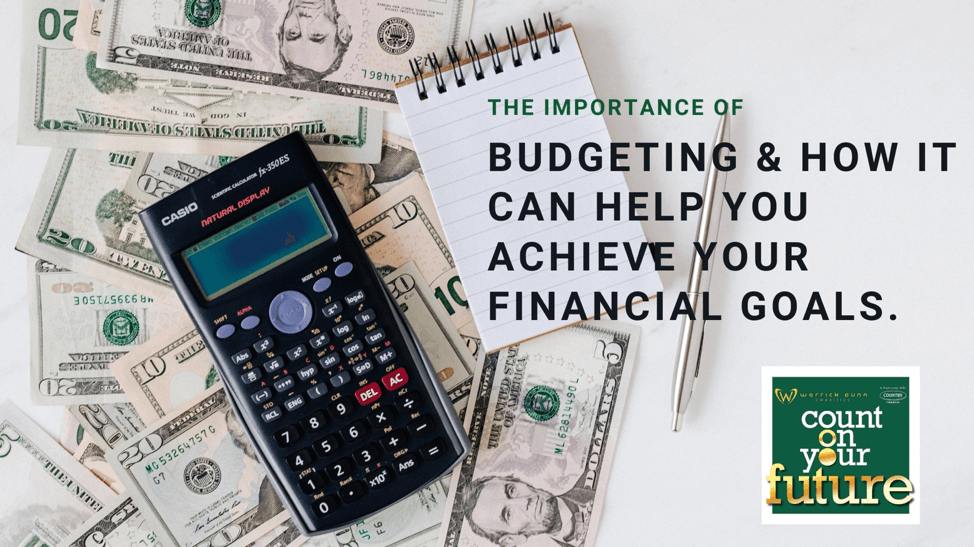April is National Financial Literacy Month. It’s also when we at WDC hold our spring Count on Your Future program, a free financial literacy workshop series for teens and adults that also includes an opportunity for participants to begin investing in themselves by opening an Individual Development Account (IDA) and receive seed and matching funds from WDC.
If you missed out on registration, don’t fret! We will be hosting the workshop series again in September. In the meantime, we want to share some important financial concepts that can assist you in making smarter financial decisions. This blog will walk you through several important terms including budgeting, 50/30/20, wants vs. needs, and paying yourself first; all important concepts that can empower you to take control over your finances and set strategies for achieving your future financial goals.
What is budgeting?
According to Merriam-Webster, the definition of budget as it pertains to finances is the amount of money that is available for, required for, or assigned to a particular purpose. More specifically, it’s a plan for using income to meet financial obligations.
Why is budgeting important?
Budgeting should help you track how much income you receive and further details how that money will be allocated to pay for expenses, build savings, and meet financial goals. Many of us do this in some form or fashion based on the bills we receive, but have you evaluated your spending habits and done a deeper dive to explore where your hard-earned dollars are going each month? This is the type of budgeting we are talking about. Doing a thorough inventory of your monthly expenditures, determining what your financial goals are, and developing a budget to support those goals are all healthy fiscal management habits that we should be practicing.
Building a budget
At the end of the day, you have control over how your money is spent, and having your basic needs covered is essential.
The best place to start is by gathering all of your receipts, bills, etc. and completing a thorough inventory of your finances by listing out your expenses for the past month. Once you have conducted your financial inventory, start by bundling them into categories like Housing, Utilities, Vehicle/Transportation, Food, Health/Medical, etc. Then place each of your expenses into the appropriate category. You should start to see a better picture of how you spend your income each month. From there, develop an average cost for each category, a number that you will use as a guide to help you break down your income to pay for your needs and wants, as well as putting money aside to save towards a goal.
Some of your expenses may be similar each month, things like a mortgage or rent, a car or loan payment, insurances, prescriptions, cable, phone, and internet. For expenses that vary like your groceries, travel, and utility bills, there is a way to help you identify a budget number for those items too. Start by looking back at past utility bills for the same timeframe the prior year and gauge how much you might spend in electric, gas, and water.
Next, dive into your expenses for food. Do you go out to eat a lot? What does that cost you on average each week? List out what you spend in groceries each month. Moving on to transportation, list out your expenses associated with getting from place to place each month, including car payment, insurance, gas, car repair, etc. The numbers you come up with will help you to set targets or goals on how you want to spend your money moving forward, and should always fall within your income.
If you are looking for a budgeting worksheet or tool to help get you started, try one of the following examples:
Country Financial
Ally
There’s a well-known rule that suggests your budget should follow the 50-30-20 breakdown: 50% goes toward needs, 30% toward wants, and 20% into savings. Looking at your monthly expenses inventory, are you surprised how your finances divide up?
Now think about those financial goals we mentioned earlier. Are there opportunities for you to make smarter choices as it relates to your expenses? And where should you start if you want to save more?
The inventory of your monthly expenses is a great starting point in getting those answers. Still not sure and looking for ideas or suggestions? Here are a few helpful tips:
- Pack a lunch instead of buying lunch.
- Plan your meals for the week and only purchase the ingredients you need instead of wandering through the grocery store grabbing what looks good to eat.
- Explore other insurance or cable/phone/internet rates.
Use your budget as your guide when making purchases, as this will help you become more disciplined financially and also help you to put money aside. There’s a reason why many financial professionals speak about paying yourself first (PYF), a strategy in which saving is prioritized and made an essential cost in a budget. Typically, in PYF a certain percentage of income is deposited in a savings account each month, or as suggested earlier 20%. Just as other “needs” like rent and food are essential, so is saving, and only once those expenses for “needs” are covered can money be used for “want” purchases.
After you’ve taken the time to create a budget, it’s time to make sure you follow it. Budgeting can be like going on a diet — you start with good intentions, but after a few weeks or months you drift away from your plan. Don’t let that happen to you, you’ve got this!
About the Author
Nancy Mulholland serves as the Program Manager for Warrick Dunn Charities, Inc. By sharing her personal health journey with high blood pressure and what she’s learned along the way, Nancy seeks to empower others to prioritize their overall health and well-being.


